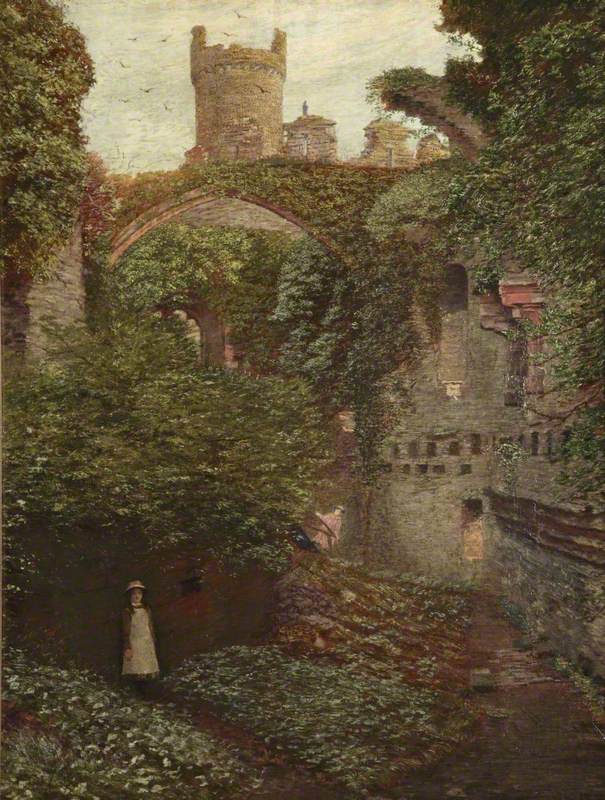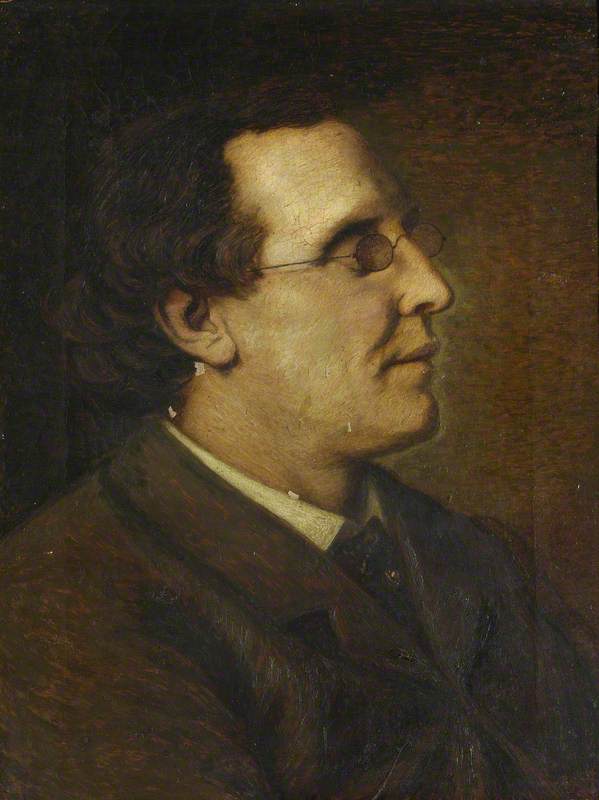
Harold Steward Rathbone was born in Wavertree, Liverpool, England on 10 May 1858 and was the son of Philip Rathbone, a wealthy Liverpool merchant. By 1861 he had moved with his family to Llandudno, Wales. After attending Clifton College in Bristol, he went on to study at Heatherley's School of Fine Art in London in 1875. In 1878 he entered the Slade School of Fine Art, University College, London where he was taught by Alphonse Legros (1837-1911). Between 1883 and 1886 Rathbone was a pupil the artist Ford Madox Brown (1821-1893) in Manchester. He then moved to Paris to study at the Académie Julian. Following his return to England he embarked on a career as a painter, sculptor and ceramist. He exhibited frequently at the Walker Art Gallery in Liverpool.
Rathbone was closely associated with the Pre-Raphaelites artists [1]. He was inspired by the teachings of William Morris and ideas the Arts and Crafts movement. He also admired the art of Renaissance Italy and the Celtic Revival. These influences are evident in the colourful and decorative ceramics produced by the Della Robbia Pottery which he founded in collaboration with the sculptor Conrad Dressler (1856-1940) in Birkenhead in 1894, and which Rathbone ran until 1906 [2].
Rathbone's address was given as living at 3 Steeles Studios, London in 1891; 4 Grove End Road, St. Marylebone, London in 1901; Elwy Villa, Cwlach Road, Llandudno, Wales in 1911; and Haydock Lodge, Haydock, Lancashire in 1929. He died at Haydock, Newton Le Willows, Lancashire on 12 December 1929 [3]
____
[1] Rathbone's portrait was painted by the Pre-Raphaelite artist William Holman Hunt (1827-1910) in 1893
[2] Dressler left in March 1896 to found the Medmenham pottery in Marlow Common, Buckinghamshire.
[3] For a detailed account of the life of Harold Steward Rathbone and the history of the Della Robbia Pottery see Carroll, Juliet. Renaissance to Regent Street: Harold Rathbone and the Della Robbia Pottery of Birkenhead. Ph.D., Liverpool John Moores University, 2017 which is available online as a PDF.
Text source: Arts + Architecture Profiles from Art History Research net (AHRnet) https://www.arthistoryresearch.net/









